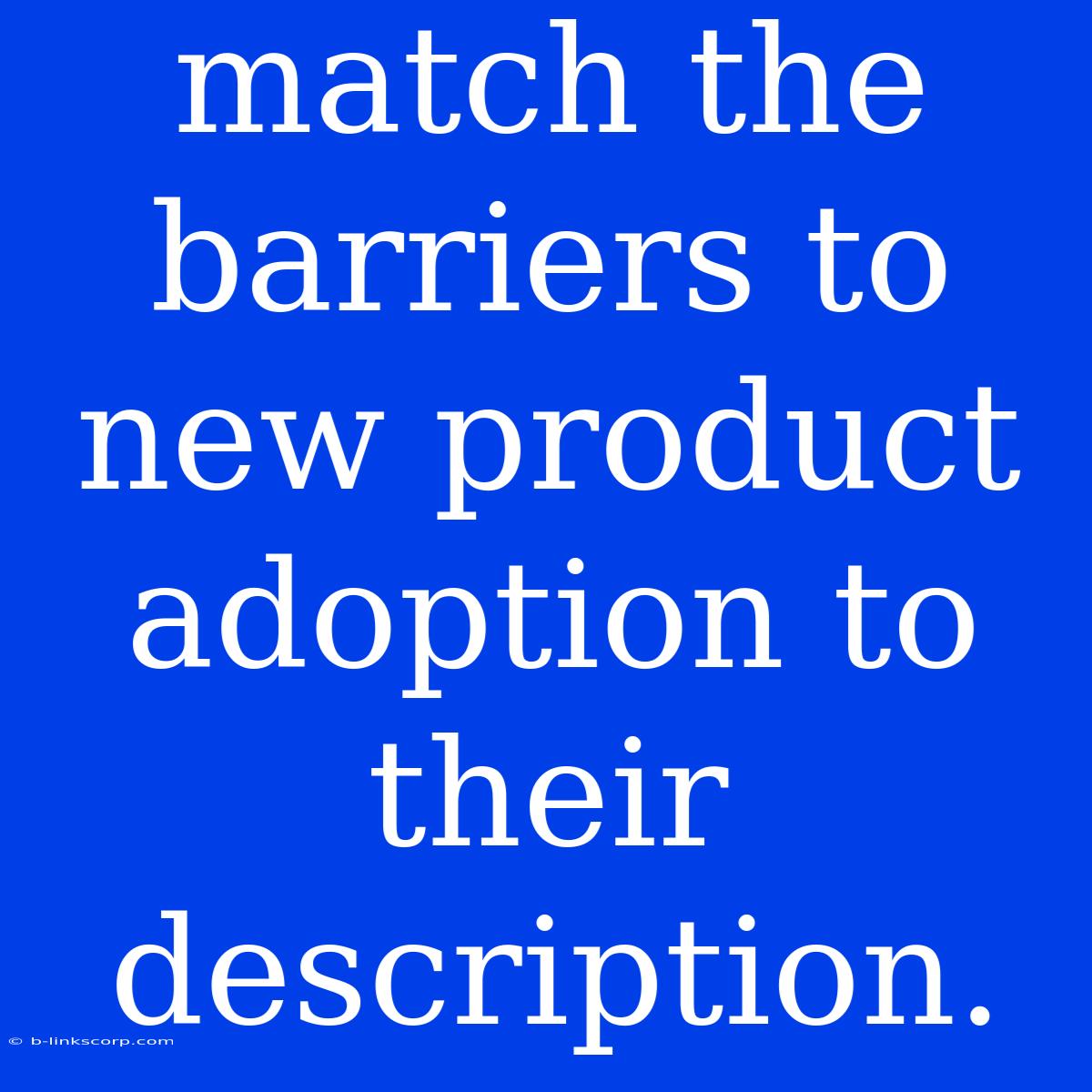Barriers to New Product Adoption: A Matching Game for Success
Adopting a new product can be a daunting task, especially when considering the many potential obstacles that lie ahead. Understanding these barriers is crucial for businesses to navigate the path to successful adoption, overcoming resistance and ensuring smooth integration.
This article aims to shed light on common barriers to new product adoption and their corresponding descriptions, helping you identify and address them effectively.
Key Barriers and Their Descriptions
Here's a breakdown of some of the most common barriers to new product adoption, paired with clear descriptions to guide your understanding:
1. Lack of Awareness:
- Description: The potential users simply don't know about the product's existence or its potential benefits.
- Example: A new, innovative software solution for managing logistics is introduced, but potential users are unaware of its features and how it can streamline their processes.
2. Cost:
- Description: The price of the product is perceived as too high compared to existing alternatives or the perceived value it offers.
- Example: A revolutionary electric car is launched with impressive features, but its high price tag makes it inaccessible to a large segment of the market.
3. Complexity:
- Description: The product is perceived as difficult to understand, use, or integrate into existing systems.
- Example: A new operating system with a complex user interface and intricate features may intimidate potential users, discouraging them from adopting it.
4. Security Concerns:
- Description: Users worry about the safety of their data or privacy when using the product.
- Example: A cloud-based storage platform might face resistance due to concerns about data breaches or unauthorized access.
5. Compatibility:
- Description: The product is incompatible with existing systems, software, or hardware used by potential users.
- Example: A new software application may require specific hardware or operating system configurations that are not available to all potential users.
6. Lack of Support:
- Description: Users lack access to adequate training, documentation, or technical support after adopting the product.
- Example: A company launches a sophisticated analytics platform, but fails to provide sufficient user support and training, leading to frustration and abandonment.
7. Fear of Change:
- Description: Users resist adopting the new product because they are comfortable with their existing routines and methods.
- Example: A well-established company hesitates to embrace a new customer relationship management (CRM) system due to the perceived disruption it might cause to their established workflow.
8. Trust:
- Description: Users lack confidence in the product's reliability, functionality, or the vendor's reputation.
- Example: A new start-up offering a revolutionary technology may face skepticism due to the lack of established track record and customer testimonials.
9. Lack of Value Proposition:
- Description: The product fails to offer a clear, compelling advantage over existing solutions, making it difficult to justify its adoption.
- Example: A new productivity tool is introduced but lacks a unique feature or benefit that differentiates it from readily available alternatives.
10. Cultural Resistance:
- Description: The product's design, functionality, or marketing strategy clashes with the cultural norms or values of the target audience.
- Example: A mobile application designed for a specific cultural market might fail to gain traction in a different region due to cultural differences in user preferences and expectations.
Overcoming Barriers for Success
By understanding these common barriers, businesses can develop strategies to overcome them and promote successful product adoption. Strategies might include:
- Addressing awareness: Through targeted marketing campaigns, content marketing, and strategic partnerships.
- Managing cost concerns: Offering flexible pricing plans, value-driven bundles, or trial periods.
- Simplifying complexity: Providing clear and concise documentation, interactive tutorials, and user-friendly interfaces.
- Addressing security concerns: Implementing robust security measures, transparent data policies, and third-party audits.
- Ensuring compatibility: Offering compatibility solutions, adapters, or updates to existing systems.
- Providing strong support: Creating comprehensive user guides, online forums, dedicated customer support lines, and training programs.
- Minimizing fear of change: Highlighting the benefits of the new product, providing gradual transition phases, and offering support throughout the adoption process.
- Building trust: Demonstrating product reliability, showcasing customer testimonials, and focusing on transparent communication.
- Creating a compelling value proposition: Identifying and highlighting unique features, benefits, and differentiating factors.
- Considering cultural nuances: Conducting thorough market research, adapting marketing messaging, and collaborating with local experts.
By proactively addressing these barriers and implementing appropriate strategies, businesses can pave the way for successful product adoption and achieve their desired market penetration.

